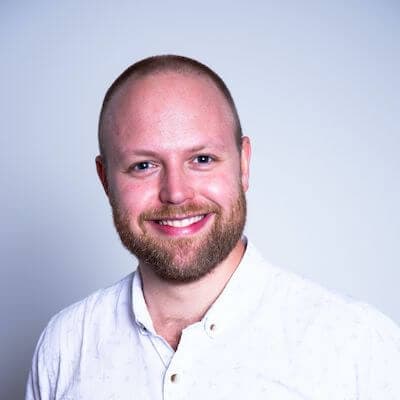/ EPISODE 68
On Driving Value with Sprint Goals
GUESTS

Maarten Dalmijn
Agile Product Management Expert, Consultant & Author
Listen on
Listen on
Google Podcasts
Listen on
Pocket Casts
Listen on
Spotify
Listen on
Apple Podcasts
Listen on
Stitcher
or use this URL in your favorite podcast app: https://feeds.transistor.fm/dreams-with-deadlines
Episode notes
If you want to know what kind of team culture really exists at a company, look very carefully at how product roadmaps are developed and executed. That, says Jenny Herald’s guest on this episode of Dreams With Deadlines, is where you can see the “messy, bloody war” that may or may not be happening behind the scenes.
Agile consultant Maarten Dalmijn, author of a forthcoming book about using sprint goals to deliver better products more efficiently, shares fascinating insights on project management and how to optimize it.
What you will learn
- Why agile software development isn’t about delivering more stuff quickly
- How three common gaps in understanding, effort, and results hobble projects
- What the Cynefin Framework is and how to leverage its domains in managing complexity – along with chaos
- Why less up-front planning and more adjustment along the way enables nimble project management and a quicker path to desired outcomes.
- Ways to identify and mediate opposing goals that can mire projects in constraint and micromanagement
- The interplay between product goals, Scrums, and OKRs
Show notes
- [00:03:27] Diving into the “why” behind Maarten’s decision to write his soon-to-be-published book – or any book – at this point in time.
- [00:04:30] What Scrum can look like (flexible and supportive of change) versus what people think it should be.
- [00:06:48] Why agile is more than just shipping more stuff faster. About Maarten’s effort to define what makes a successful Scrum, the outputs that drive desired business and customer outcomes, and obstacles commonly encountered.
- [00:08:57] “Driving Value with Sprint Goals: Humble Plans, Exceptional Results,” which is forthcoming in May, comprises four parts.
- [00:09:32] Maarten shares in the book a personal story about a childhood exercise on a Dutch island that parallels the journey of discovery that is software development.
- [00:13:26] A closer look at the three gaps, a model originated by leadership strategist Stephen Bungay, including:
- The Knowledge Gap: What we know is less than we’d like to know.
- The Alignment Gap: What we’re likely to do versus what we actually do.
- The Effects Gap: The difference between desired results and actual outcomes.
- [00:15:51] How to avoid getting lost in “the fog of beforehand,” which can result in overcompensation and analysis paralysis that constrains or slow decision-making.
- [00:18:28] Humble Planning: It’s not about planning less. It’s about reducing upfront planning to leave room for critical adjustments later in the project life cycle.
- [00:20:17] About Dave Snowden’s Cynefin Framework, designed to help manage complexity (and chaos) in times of crisis – a sort of field guide for decision-makers.
- [00:21:19] Delineating the domains encompassed by the Cynefin model and how they apply in a software development context:
- Confusion
- Clear
- Complicated
- Complex
- Chaotic
- [00:23:40] Understanding self-imposed friction and how rigid plans can lead to massive breakdowns in desired business outcomes.
- [00:27:16] How opposing goals fracture teams and slow – if not defeat – mutually desirable results while team alignment (internally and with partners) supports success.
- [00:30:21] Navigating “Roadmap Hell” and how a traditional project management mindset yields binary, inflexible processes that create conflict and self-defeat.
- [00:32:45] Want to see how agile a company culture really is? Look at their mindset around road mapping – that’s where business and IT really come together and reveal the turf wars and rigidity!
- [00:34:06] Teasing out Part II – the “beating heart” – of Maarten’s book: Sprint Goals:
- They depend on a clear understanding of intent, what the team is trying to achieve, and why it matters.
- It’s key to integrate foundational sprint goals into every Scrum.
- OKRs have a role to play in helping to prevent or break the feature factory loop.
- [00:36:32] Understanding the interplay between product goals, Scrums, and OKRs; how they fit together in multi-faceted ways with multiple protocols.
- [00:38:42] About applying North Star Metrics – when and how they work and the constellation of factors that can influence measures and strategic adjustments.
- [00:41:42] What happens when companies don’t use sprint goals?
- It disempowers teams.
- It restricts information, understanding, and decision-making ability.
- It reduces flexibility.
- It leads to technical debt and prioritizing speed over quality.
- [00:44:42] Quick-Fire Questions for Maarten:
- What is Your Dream with a Deadline? Finishing up his book secure in the knowledge that he has delivered what he intended – and then some!
- How do you define a good sprint goal? It includes everything in the acronym FOCUS: Fun, Outcome-oriented, Collaborative, Ultimate, and Singular.
- What’s the takeaway he most wants for those who read his book? More joy, a sense of empowerment, flexibility, freedom, and less effort that yields more results!
Relevant links
- “Driving Value with Sprint Goals: Humble Plans, Exceptional Results,” by Maarten Dalmijn and Friso Dalmijn
- More about leadership Strategist Stephen Bungay’s The Three Gaps
- More about Dave Snowden and the Cynefin Framework
About our guest:
Maarten Dalmijn worked with award-winning start-ups, scale-ups and corporations in various roles before taking the leap as an independent Product Management, Agile and Scrum consultant. By blending the world of Product Management and Agile, Maarten helps teams beat the Feature Factory and uncover better ways of delivering value together.




